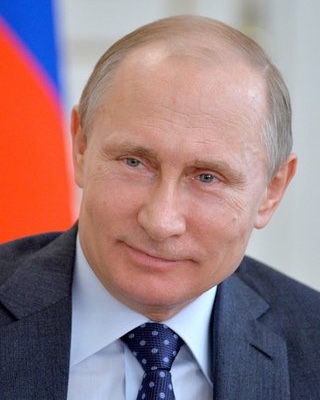What History Suggests Will Be Russia’s Next Move in the Middle East

Vladimir Putin - By Kremlin.ru, CC BY 4.0
What does Putin want in the Middle East? And will he be able to maintain the highly active policy there that he has been pursuing? Viewed from a historical perspective, both the goals that Moscow pursues in the region as well as the circumstances in which Moscow has been active or inactive, may shed light on these questions.
Like Putin, other top leaders in Moscow since the Bolshevik Revolution have pursued two main geopolitical objectives in the Middle East. One of these has been weakening Western influence in the region. This goal has been important to top leaders in Moscow for the past century because they have long worried that the West was both a military threat and a model for dissidents at home. Fortunately for Moscow, there have been several sources of Middle Eastern discontent that it has been able to exploit: a history of European colonialism, American support for Israel, and regional dissatisfaction with U.S. foreign policy.
Moscow’s other geopolitical objective in the region has been the prevention of indigenous political trends from harming Russian interests. These have included pan-Turkism after the creation of a nationalist Turkey in the wake of the downfall of the Ottoman Empire; Islamic radicalism (at least since the 1979 Iranian revolution); and the Arab Spring since 2011.
Sometimes Moscow has pursued these two objectives vigorously, while at other times it has not. After a short burst of activity in the region in the early 1920’s, Moscow was largely inactive there during the period of the domestic Soviet power struggle of the mid-1920s and Stalin’s crackdown on dissent in the 1930s. While Moscow’s interest in the Middle East revived during the period of the Nazi-Soviet pact (1939-41), but Hitler’s decision to attack the USSR in 1941 forced Stalin to defer to the West’s dominance in the region. (Soviet forces did occupy northern Iran during the war, but this was done in conjunction with the British simultaneously occupying southern Iran.)
After World War II ended and the USSR became one of the world’s two superpowers, Moscow pursued an active policy in the Middle East. However, after the collapse of the USSR, Russia became largely (though not completely) inactive in the region. That changed when Putin decided to reassert Russian authority in the world.
What this indicates is that Moscow’s ability to pursue an active Middle East policy very much depends on whether domestic political and economic conditions inside Russia permit Moscow to do so.
Even when Moscow has pursued an active policy toward the Middle East, it has not always focused on pursuing both anti-Western and anti-indigenous objectives there simultaneously, but sometimes it has. During the Cold War Moscow was able to concentrate exclusively on pursuing anti-Western objectives there until the late Brezhnev era. But that changed with the rise of radical Islam, which was hostile to both Marxism and the Soviet Union. More importantly, the Soviet occupation of Afghanistan incurred the opprobrium of most of the Muslim world. Worst of all, Islamists opposed to the Soviet occupation drew support from the West.
With the breakup of the USSR and the rise of Chechen and other Muslim nationalisms in Russia during the 1990s, Moscow desperately sought to ensure that the Chechen cause did not galvanize the Muslim world and the West the way that Afghanistan had. And in this, Moscow largely succeeded.
After 9/11, Putin’s support for the U.S. signaled the possibility that America and Russia would be allies against the common threat of radical Sunni Islamism. Indeed, Putin was willing to work with anyone against this threat: pro-Western Arab governments, the West, and Israel in addition to Iran and anti-Western but secular Arab governments—such as the Saddam Hussein regime in Iraq and the Assad regime in Syria.
But the U.S.-led intervention in Iraq, American support for the anti-Russian “color revolutions” in Georgia and Ukraine in the mid-2000s, and then the Obama administration’s support for the Arab Spring revolutions all contributed to a change in policy. Putin concluded that the United States’ support of democratization undermined both Russian interests and Russia itself.
Indeed, the threat Putin sees from American actions is two-fold: He is worried by both American success and failure in the Middle East. Russia doesn’t want the US to succeed for that will lead to increased American dominance in the region. And it doesn’t want the US to fail if that enhances the power of Islamists.
At present, of course, Putin is actively contesting both Western influence in the Middle East as well as indigenous radical forces there—and with some degree of success. But with the severe economic challenges that Russia is facing now as a result of Western sanctions and the sustained drop in the price of petroleum (Moscow’s principal source of revenue), it is not clear whether Russia will be able to maintain its current role in the Middle East, or whether conditions inside Russia will deteriorate once again to the point that Moscow cannot afford to pursue such an active policy there.